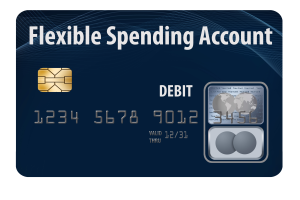
by admin | Nov 19, 2024 | Flexible Spending Accounts
 On October 22, 2024, the IRS announced that the limit on employees’ salary reduction contributions to a health Flexible Spending Account (FSA) will increase to $3,3000 for plan years beginning in 2025. This is an increase from the 2024 limit of $3,200. By understanding the latest contribution limits, individuals can better plan for 2025 and see how the new limits can enhance tax savings.
On October 22, 2024, the IRS announced that the limit on employees’ salary reduction contributions to a health Flexible Spending Account (FSA) will increase to $3,3000 for plan years beginning in 2025. This is an increase from the 2024 limit of $3,200. By understanding the latest contribution limits, individuals can better plan for 2025 and see how the new limits can enhance tax savings.
What is an FSA?
An FSA is a tax-advantaged savings account that allows you to set aside pre-tax dollars to pay for eligible medical expenses. This can help you save money on your tax bill and reduce your out-of-pocket healthcare costs.
Key Points to Remember:
Use It or Lose It: Generally, any unused funds in your FSA at the end of the year are forfeited.
Qualified Expenses: Eligible expenses include doctor visits, prescription medications, dental care, and more.
Employer Contributions: Some employers may offer additional contributions to your FSA.
How to Maximize Your FSA Benefits:
Plan Ahead: Estimate your annual healthcare costs and adjust your FSA contributions accordingly.
Use Your FSA Wisely: Keep track of your expenses and use your FSA funds throughout the year.
Check for Grace Periods and Carryover Rules: Some plans offer grace periods or allow you to carry over unused funds to the next year.
Why Are FSA Contribution Limits Higher for 2025?
FSAs offer significant tax savings by letting individuals use pre-tax dollars for eligible medical expenses like copayments, deductibles, and prescription or over-the-counter medications. With the new 2025 limit of $3,300, participants can allocate even more toward healthcare costs, reducing their taxable income.
For FSAs that permit unused funds to carry over, the maximum carryover has risen to $660, which represents 20% of the new FSA limit. This adjustment aligns with the increased contribution cap, providing greater flexibility for managing healthcare costs from year to year.

by admin | Oct 15, 2024 | Employee Benefits, Flexible Spending Accounts
 When it comes to health insurance, there is a lot of jargon and plenty of acronyms. Many people have heard of FSAs, but may not actually know — what is a flexible spending account, exactly?
When it comes to health insurance, there is a lot of jargon and plenty of acronyms. Many people have heard of FSAs, but may not actually know — what is a flexible spending account, exactly?
If you have an employer-sponsored health plan, a flexible spending account (FSA) is often available as part of the benefits package. There are two types of FSAs: one for health and medical expenses and another for dependent care/childcare costs. Both are designed to help you set aside money during the year for out-of-pocket expenses while enjoying tax benefits.
When you contribute to an FSA, the money is taken from your paycheck before taxes are removed and is never taxed. The Federal FSA Program estimates that those with an FSA save 30 percent on healthcare expenses on average.
How Does an FSA Work?
- Contributions: You contribute a portion of your pre-tax salary to your FSA. You set a contribution amount to be deducted from each paycheck, up to the federal limit, which for 2024 is $3,200.
- Rollovers, etc.: Employers have the option of allowing employees to roll over up to $640 in 2024 or they can provide a 2 ½ month grace period during which employees can spend their remaining contributions, but they can’t offer both.
- Reimbursement: Use your FSA funds to pay for qualified medical expenses. You typically submit receipts for reimbursement.
- Tax Benefits: Contributions are made with pre-tax dollars, reducing your taxable income.
What Can You Spend Your FSA Money On?
- Medical expenses: Doctor’s visits, prescriptions, dental care, vision care, and mental health services
- Over-the-counter medications: Many OTC medications, like pain relievers and allergy medications
- Medical equipment: Items such as crutches, wheelchairs, and diabetic supplies
- Dependent care expenses: Childcare or elder care costs, which can include before and after school care, preschool, and adult day care. In 2024, employees may contribute up to $5,000 if filing jointly or $2,500 if filing taxes separately.
Key Points to Remember:
- Use-It-or-Lose-It: Generally, any unused FSA funds at the end of the year are forfeited. However, some plans offer a grace period or carryover options.
- Contribution Limits: There are annual contribution limits for FSAs, set by the IRS.
- Dependent Care Expenses: If you have dependent care expenses, you can use your FSA to pay for them up to a certain limit.
Is an FSA Right for You?
Opening an FSA is a great way to save money on taxes and prepare for healthcare costs. As with other types of savings accounts, it allows you to contribute and stash away money, but in this case, that money is taken out of your paychecks in a set amount and is nontaxable. Check to see if your employer matches contributions as well.
Understanding the rules, benefits, and limitations of these accounts will allow you to maximize their value and ensure you’re making the most of this valuable employee benefit.

by admin | Aug 5, 2024 | Flexible Spending Accounts, HSA/HRA
 Medical expense accounts can help you save on all kinds of healthcare costs. Here are some you may not know about yet.
Medical expense accounts can help you save on all kinds of healthcare costs. Here are some you may not know about yet.
HSA, FSA, and HRA can typically be used for:
- Medical expenses: Doctor visits, surgeries, prescriptions, dental and vision care, and mental health services.
- Over-the-counter (OTC) medications: Many OTC medications, including pain relievers, allergy medications, and cold remedies, are now eligible.
- Medical equipment: Items like crutches, wheelchairs, and diabetic supplies often qualify.
- Qualified medical transportation: Expenses related to getting to and from medical appointments
- Women’s healthcare products: As of 2020, many women’s healthcare and hygiene items—including pads and tampons—were added to the list. Birth control and other contraceptives also count as qualified medical expenses with a prescription.
- Sunscreen: If you buy sunscreen with a sun protection factor (SPF) of 15 or higher, you can pay for it with your FSA or HSA account.
- Health insurance premiums: In some cases, you can use HSA or FSA funds to pay for COBRA premiums or health insurance premiums during periods of unemployment.
- Alcohol or drug treatment: If you need treatment at a hospital for alcohol or drug abuse, you can cover those costs with your FSA or HSA. That includes meals and a treatment center stay. You can also include rides to and from meetings for groups like Alcoholics Anonymous.
Expenses that might be covered, but check your plan:
- Long-term care: Some plans may cover long-term care expenses, but this is often limited.
- Cosmetic surgery: Generally not covered unless medically necessary.
- Weight loss programs: May be eligible if medically supervised.
- Gym memberships: While some plans cover gym memberships, it’s often dependent on specific medical conditions or doctor referrals.
Important Considerations:
- Keep receipts: You’ll generally need receipts to claim reimbursement for your purchases.
- Check eligibility: Not all items are covered, so verify with your plan administrator.
- Maximize your savings: Use your accounts strategically to reduce out-of-pocket costs.
Additional Tips:
- Shop around: Compare prices for medical goods and services to maximize your savings.
- Take advantage of online resources: Many health insurance providers offer online tools and resources to help you understand your coverage.
- Consult with your healthcare provider: Your doctor can recommend treatments and products that may be eligible for reimbursement.
By understanding the nuances of HSAs, FSAs, and HRAs, you can make informed decisions about how to use these accounts to your advantage and maximize your healthcare savings.

by admin | Nov 30, 2021 | Flexible Spending Accounts
 The end of the year is drawing near which may mean you have some extra money to spend.
The end of the year is drawing near which may mean you have some extra money to spend.
No, you didn’t read that wrong. Many Americans have money in their Flexible Savings Accounts (FSAs) that they need to use up before the end of the year. FSAs provide the benefit of putting pre-tax money aside which optimizes your money. Your FSA is set up through your employer and everyone’s rules are a little different. However, most plans run January 1 – December 31. Some companies allow their employees to roll over a set amount into the new year. Checking with your HR department will help you maximize your hard-earned money.
Typically, FSA money has to be used by the end of the year but the COVID-19 relief bill gets you one more year to spend. That means you have until December 31, 2021 to spend FSA money earmarked for last year. The extension also applies for your 2021 FSA money – the credit will be available until the end of 2022.
All funds remaining in the account at the end of the grace period are forfeited according to the “use-it-or-lose-it” rule, which requires all remaining funds in an FSA to be forfeited at the end of the plan year.
If you have FSA money to spend, we’ve compiled a list of some ways to use up your hard-earned FSA dollars that you may not have thought possible:
Fill Your Medicine Cabinet
You can once again purchase over the counter medication with FSA money thanks to the CARES Act. You can stock up on first aid kits or other items that don’t require a prescription such as:
- Bandages
- Heating pads
- Contraceptives
- Fertility and Pregnancy Tests
- Sleep aids such as Melatonin or a sleep mask
- Motion sickness medication
- Headache medicine
- Antacids or heartburn medication
- Menstrual products
- Contact Solution
- Allergy medication
- Acne creams and cleansers
Alternative Therapies
Under IRS law, certain alternative therapies are eligible for reimbursement. Acupuncture and chiropractic care, alternative medicinal treatments, and herbal supplements are a great way to use up your funds for the year and get a little cash back when you most need it.
Dental
Dental benefits often work differently than medical coverage. According to the American Dental Association, this benefit is often capped annually – generally between $1,000 and $2,000. If you have unused funds remaining in your FSA, now may be the time to schedule a last-minute appointment with your dentist, especially if you might need serious work down the road. This way, you can use up the funds remaining in your account by year-end and reduce your out-of-pocket expense next year.
Prescription Refills
Refilling your prescription medications at year end are a great way to use up your funds in your medical FSA. Take inventory of your prescription drugs, toss out expired ones, and make that call for a refill to your doctor or pharmacy.
Medical Equipment and Supplies
Medical equipment and supplies are eligible for reimbursement under a medical FSA. Walking aids like canes, walkers and crutches, blood pressure monitors, thermometers, and joint braces are just a few. Please note that some will require a note or prescription from your doctor.
Mileage and Other Healthcare-Related Extras
Traveling to and from any medical facility for appointments or treatment for yourself or a dependent are eligible for reimbursement under your FSA. This not only includes traveling by your own vehicle, but also by bus, train, plane, ambulance service and includes parking fees and tolls. However, transportation expenses are not eligible with a Dependent Care Flexible Spending Account (DCFSA).
Family Planning
You can put your FSA dollars to work if you are a new or soon-to-be mom on products such as pregnancy tests, fertility monitors, prenatal vitamins and breastfeeding supplies. On the flip side, condoms and other contraceptives are also FSA eligible.
Nicotine Cessation Products
If you are trying to quit smoking, you can use your FSA funds toward nicotine gum, patches, lozenges, inhalers and nasal sprays.
Dependent Care
If you have opted to contribute to a DCFSA, you can get reimbursed for day care, preschool, summer camps and non-employer sponsored before and after school programs. In addition, funds contributed to this type of FSA can be used for elderly daycare if you’re covering more than 50% your parent’s maintenance costs.
Ancestry Kits with Health Reports
Interested in learning about your heritage and how your DNA can affect your health? You are in luck! Ancestry kits like 23andMe that include health reports are typically considered FSA eligible to be reimbursed approximately 50%.
People often don’t use their FSA out of fear that they need to save it for later. However, every year $400-500 million in FSA funds is forfeited. Lost cash is never a good thing. If you still have leftover funds, consider going to the FSA Store where you can find hundreds of eligible items and pay for them with your account dollars without ever leaving your house.
This list is not an exhaustive list of ways to spend your FSA money. Check with your HR department and insurance agent if you have questions about qualified expenses.

by admin | Aug 24, 2021 | Benefit Management, Flexible Spending Accounts, HSA/HRA
 We all know how confusing and complex benefits and healthcare terms can be- the difference between deductible and co-insurance is a common question for many and there are plenty of others like it. When you are comfortable and confident in how your plan works, you can make an informed decision on HOW to use and take advantage of your benefits!
We all know how confusing and complex benefits and healthcare terms can be- the difference between deductible and co-insurance is a common question for many and there are plenty of others like it. When you are comfortable and confident in how your plan works, you can make an informed decision on HOW to use and take advantage of your benefits!
We have created a list and explanation of the most common terms to help you understand and better utilize your health benefits:
- Co-payment: An amount you pay as your share of the cost for a medical service or item, like a doctor’s visit. Co-pays are most common for emergency room, urgent care and prescription drugs. In some cases, you may be responsible for paying a co‐pay as well as a percentage of the remaining charges.
- Co-insurance: Your share of the cost for a covered health care service, usually calculated as a percentage (like 20%) of the allowed amount for the service. For example, if your plan has a 30% co-insurance rate, the carrier will pay 70% of the allowed amount while you pay the balance.
- Deductible: The amount you owe for covered health care services before your health insurance or plan begins to pay. For example, many plans require an individual to pay $1,000 in cumulative deductibles before they begin paying out.
- Dependent coverage: Health insurance coverage extended to the spouse and unmarried children up to age 26 who are totally or substantially reliant on their parents for support, thereby defined as “dependent children”.
- Explanation of Benefits (EOB): Every time you use your health insurance, your health plan sends you a record called an “explanation of benefits” (EOB) or “member health statement” that explains how much you owe. The EOB also shows the total cost of care, how much your plan paid and the amount an in-¬network doctor or other healthcare professional is allowed to charge a plan member (called the “allowed amount”).
- In-Network Provider: A provider who has a contract with your health insurer or plan to provide services to you at a discount. In-Network Providers have contracted with the insurance carrier to accept reduced fees for services provided to plan members. Using in-network providers will cost you less money. When contacting an In-Network Provider, remember to ask, “are you a contracted provider with my plan?” Never ask if a provider “takes” your insurance, as they will all take it. The key phrase is contracted.
- Open Enrollment: A period during which a health insurance company is required to accept applicants without regard to health history.
- Out-of-Network Provider: A provider who doesn’t have a contract with your health insurer or plan to provide services to you at a pre-negotiated discount. You’ll pay more to see an out-of-network provider, sometimes referred to as an out-of-network provider.
- Out-of-Pocket Maximum: The limit or most you’ll pay out of your own pocket for services during your insurance plan period (usually one year).
- Premium: The amount you pay for your health insurance or plan each month.
- Qualifying Life Event (QLE): A change in your life that allows you to make changes to your benefits’ coverage outside of the annual open enrollment period. These changes include a change in marital status (marriage, divorce, death of spouse), a change in the number of eligible children (birth, adoption, death, aging-out), and a change in a family member’s benefits eligibility under another plan (losing a job, Medicare or Medicaid eligibility, etc.)
In addition to understanding these common terms, there are other ways to utilize your benefits, save money and make an informed decision based on your specific needs.
- Flexible Spending Account (FSA): Funded through pre-tax payroll deductions, an FSA is a cost-savings tool that allows you to pay for qualified healthcare-related expenses with pre-tax dollars. Funds deposited in an FSA must be spent in the same year in which they are set aside, or they are forfeited. This rule is often referred to as “use it or lose it.”
- Health Reimbursement Account (HRA): An employer-funded savings plan that will reimburse you for out-of-pocket medical expenses. Unlike an FSA, however, you don’t “use it or lose it” – unused balances will roll over and accumulate over time, though the account cannot be “cashed-out.”
- Health Savings Account (HSA): A savings product that serves as a substitute for traditional health insurance. HSAs enable you to pay for current health costs. They also allow you to save for future medical and retiree health costs tax-free. Unlike an FSA, however, you don’t “use it or lose it” – unused balances will roll over and accumulate over time and can be “cashed-out.”
Understanding all of the terms and acronyms can feel like learning a new language, so it’s helpful to have a basic reference chart. With a good understanding of what some healthcare “benefits lingo” means, it will be easier to find a plan that meets your needs and budget. To explore more healthcare terms, visit https://www.shrm.org/resourcesandtools/hr-topics/benefits/pages/common-health-benefit-terms-glossary.aspx
by Johnson and Dugan | Dec 13, 2019 | Benefit Management, Compliance, Flexible Spending Accounts
California law AB1554, signed into law by Governor Newsom on August 30, 2019, describes a new requirement for employers to advise participants in a Flexible Spending Account (FSA) of claim deadlines before the end of the plan year. Per the law: “This bill would require an employer to notify, in a prescribed manner, an employee who participates in a flexible spending account of any deadline to withdraw funds before the end of the plan year.”
Two different forms must be used, one of which can be electronic. Examples of notification options are “(1) Electronic mail communication. (2) Telephone communications. (3) Text message notification. (4) Postal mail notification. (5) In-person notification.”
Incorporating the claim filing deadline in your annual FSA open enrollment communications would satisfy this requirement as long as it is provided in two forms of the suggested methods. Terminated employees must also be notified of the claim filing deadline. This could be done in exit paperwork, verbally in an exit interview or sent electronically.
A poster could also be posted in an area that is accessible to all employees and should include the annual claim filing deadline as well as the deadline to file after the last day of employment, if mid-year. Click Here for a sample poster.
Your Johnson & Dugan team can work with you to incorporate this notice in your communications and meet this new requirement.

 On October 22, 2024, the IRS announced that the limit on employees’ salary reduction contributions to a health Flexible Spending Account (FSA) will increase to $3,3000 for plan years beginning in 2025. This is an increase from the 2024 limit of $3,200. By understanding the latest contribution limits, individuals can better plan for 2025 and see how the new limits can enhance tax savings.
On October 22, 2024, the IRS announced that the limit on employees’ salary reduction contributions to a health Flexible Spending Account (FSA) will increase to $3,3000 for plan years beginning in 2025. This is an increase from the 2024 limit of $3,200. By understanding the latest contribution limits, individuals can better plan for 2025 and see how the new limits can enhance tax savings.




 We all know how confusing and complex benefits and healthcare terms can be- the difference between deductible and co-insurance is a common question for many and there are plenty of others like it. When you are comfortable and confident in how your plan works, you can make an informed decision on HOW to use and take advantage of your benefits!
We all know how confusing and complex benefits and healthcare terms can be- the difference between deductible and co-insurance is a common question for many and there are plenty of others like it. When you are comfortable and confident in how your plan works, you can make an informed decision on HOW to use and take advantage of your benefits!